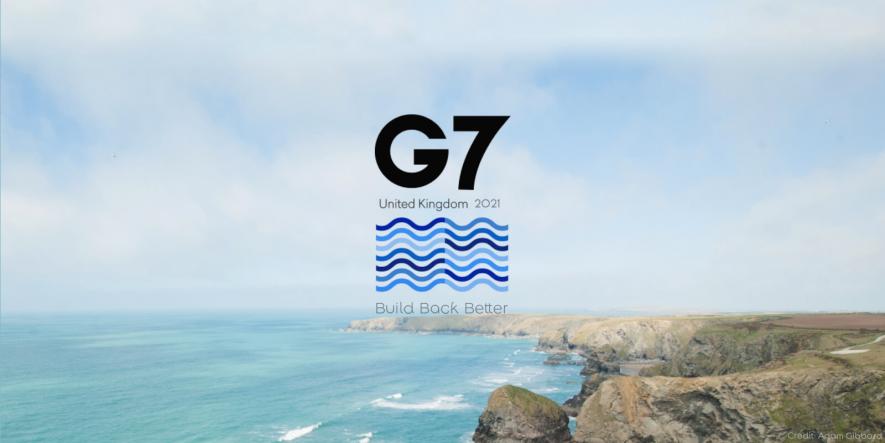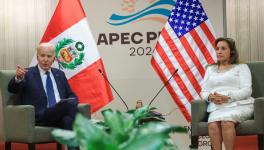G7: Or Failed Colonial Powers Telling the World What to Do

The Foreign Ministers of G7 countries met in London this week and issued a communique painting Russia as a “malicious actor” and China as a “bully”. It had little substance apart from ticking all the “right” boxes in its anti-China and anti-Russia campaign: Uyghurs, Taiwan, Hong Kong, Crimea, Ukraine, etc. It ended with arrogating to itself the mantle of being the “rules-based international order”, distinct from what the real, lawful international order is, the United Nations and the Security Council.
This is why India’s willingness to be a part of “invitees”, to wait in the antechamber with Australia, South Korea and South Africa, while the imperial powers of the G7 decide on the weighty matters of the world, is mystifying. Self-respect would have demanded that if you do not get a seat at the table, do not go, and not wait outside the meeting room. India’s presence gives G7 a semblance of legitimacy. Why should the worldview of ex-colonial and settler-colonial powers be important for us or the world? Why should we recognise the right of the UK to speak on human rights with its record of colonial brutalities – from Mau Mau to Bengal famine? The 1943 Bengal killed an estimated 3 million people in 1943, with UK’s hero Churchill complaining that it had not killed enough as the “Indians bred too much.”
To India’s embarrassment, 2 members of the Indian delegation tested Covid-19 positive, leading to the entire delegation including the External Affairs Minister S. Jaishankar, having to self-isolate themselves and away from the meeting.
Who are the G7 and what is their mandate to speak on sundry subjects? G7 are a bunch of western countries—the US, UK, France, Germany, Japan, Italy and Canada—who believe that they have the “civilisational” mandate to tell the world how it should be run. The EU participates as a permanent guest, through the President of the Commission, and the President of the Council. Shorn of verbiage, the G7 represents countries that are allembers of NATO. It was created in the 70s, ostensibly as a gathering of 5 industrially advanced economies, and later expanded to 7. During the Yeltsin years, it included Russia, who were expelled in 2014. The G7 then reverted to its original role as the political face of NATO. Or as The Spectator said in August 2019, “Simply by its make-up, the G7 is beginning to look like a doomed effort to preserve the hegemony of white power.”
The G7 meeting of Foreign Ministers in London was a preparatory meeting to the one of the G7 leaders in Cornwall, the UK in June. The 12,400 word G7 Foreign Ministers communique sets the agenda for the June meeting: isolate China and Russia, draw the European Union in a closer embrace with the US, and assert the supremacy of the west over the rest. This is the Biden agenda. After becoming the President, Biden announced that the US is back in international affairs at the head of the table. A position that Trump had vacated by his America First policy and demands that his allies pay the US billions of dollars as protection money for keeping its troops in Europe, Japan and South Korea.
The US and its NATO allies have made clear to Russia that it has no role other than as a country that lost the cold war and must accept subjugation. It needs to open its economy to western capital and allow the loot of its resources that Yeltsin had allowed. That is why, despite Putin’s repeated attempts to build a space for itself in Europe, he failed. The eastward march of NATO, breaking the assurance given to the Soviet Union that NATO would not be expanded beyond Germany, has been was never honoured. NATO has now installed missile batteries in the Baltic states, Romania and Poland. It routinely conducts military exercises near Russian borders while decrying Russian exercises within its borders.
The re-emergence of Russia as a military power with its armed forces and nuclear weapons, poses a challenge to NATO. The European countries need gas and oil from Russia, its closest source of hydrocarbons. The US would like the European Union to boycott Russia economically and has threatened even its ally Germany with sanctions on the undersea pipeline Nord Stream 2. The US is using the G7 to draw the EU countries in its battle against Russia. The US belief that Russia will continue to crumble, as it was doing in the kleptocratic Yeltsin years, has been belied. The Russian state has consolidated itself, both economically and militarily, and has even projected its power in Syria. It helped the Assad government to survive a three-pronged attack—of al Qaeda-Islamic State, Turkey and Israel—backed by the NATO countries.
The second axis of NATO’s attack is against China. The battle in Asia is over South East Asia and East Asia, with the US trying to use its control of the oceans to control China. So what Obama called the US pivot to Asia—towards Asia-Pacific—has now become pivot to Indo-Pacific. China is projected to overtake the US economically by 2028, becoming the world’s biggest economy. The US has imposed sanctions against many Chinese high-tech companies in the belief that this will help it beat back the Chinese advance. It is also using its naval power in the South China Sea under the guise of Freedom of Navigation Operations (FONOPs), similar to the one that it conducted recently in India’s Exclusive Economic Zone in Lakshadweep.
The G7 meeting of Foreign Ministers this week and in June of the heads of their governments is to cement a global axis against Russia and China. The instruments against Russia are economic sanctions, against China technology sanctions. The US is using its control over the world’s financial system to isolate Russia and China from the global economy, hoping to stop or reverse China’s march to becoming the world’s leading economic power.
The Russian and Chinese response has been two-fold. One is to come much closer, as each complements the other. Russia is still a major military power and cannot be cowed down by US threats. China is already the world’s manufactory and has built up a strong industrial and technology base. Its only weakness is in chip making, where they are still 3-4 years behind the US. But in many areas, for example, 5G, rare earth production for batteries, they are ahead of the US.
The US weakness in the strategic competition is that it is a maritime power while both Russia and China and land-based powers. That is why the Belt-Road Initiative (BRI) of China is reshaping the Eurasian economies. It is the possibility of land-based trade being the motor of developing the Central Asian and East European economies, its continuation to Germany and western Europe that provides an alternate possibility for countries in the Eurasian landmass. While the UK is completely tied to the US vision of the Indo-Pacific, the European countries like Germany and France still have a stake in the emerging Eurasian market. Looking at the role the EU is playing in the Ukrainian crisis, where they endorsed Ukrainian President Zelensky’s statement of taking Crimea back by force, it does not appear they have the will to buck the US. Even if it is not in their economic interest.
Why is India lining up with the US and the UK with their vision of the Indo-Pacific? Why is it endorsing Freedom of Navigation Operations of the US and its claims that the South China Sea is global commons? India has differences with China about its northern borders, but that should not blind it to the need for a country of India’s size and stature to have strategic autonomy. Becoming an appendage to the G7 in the company of Australia, South Korea and South Africa is a far cry from the leading role it played in the non-aligned movement and on the global stage. The Modi government has no strategic vision of an independent foreign policy and what is in India's interest. Instead, it is a prisoner of its fascination with the US and the hope that as a subordinate ally, the US will give it a seat at the high table someday; even if not today
Get the latest reports & analysis with people's perspective on Protests, movements & deep analytical videos, discussions of the current affairs in your Telegram app. Subscribe to NewsClick's Telegram channel & get Real-Time updates on stories, as they get published on our website.























